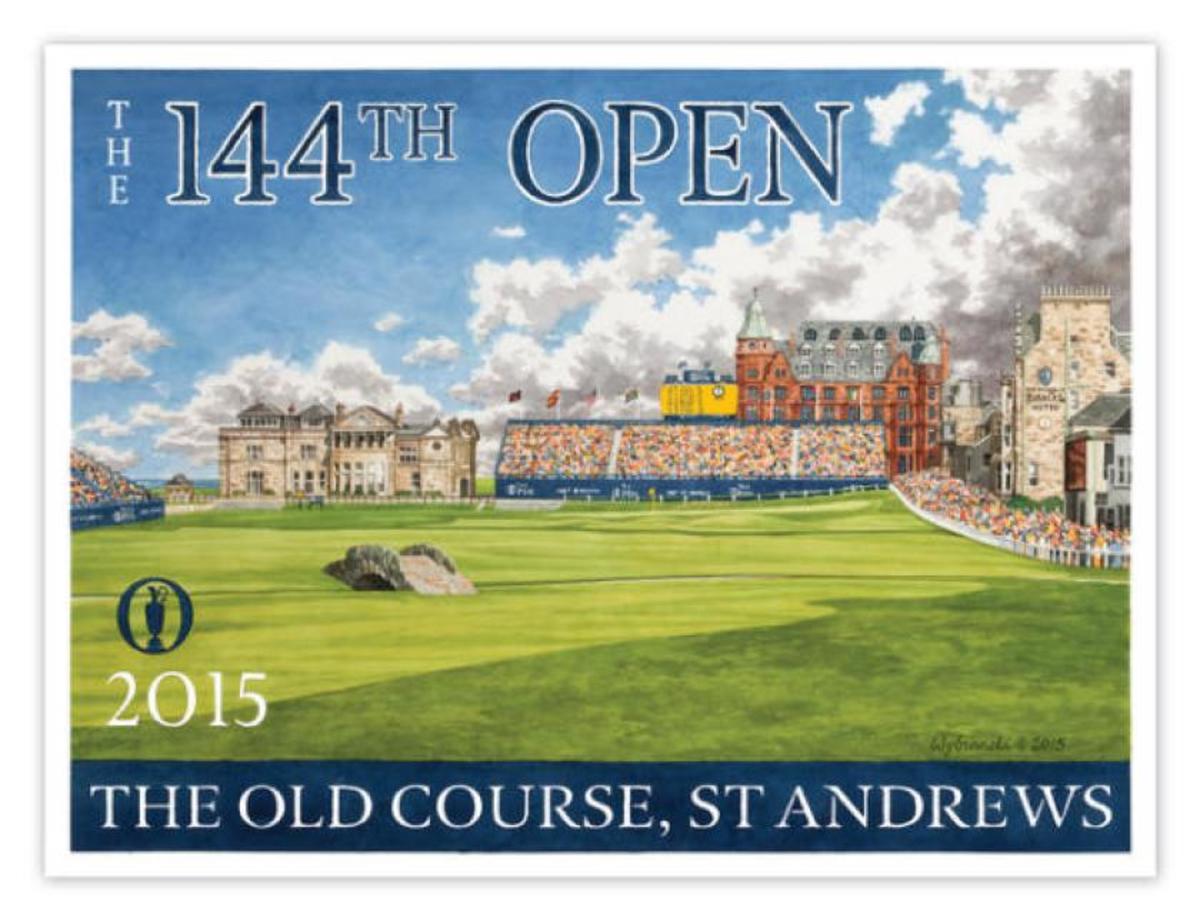Wybranski turns golf into an art form

Contrary to popular belief, Lee Wybranski — he of the modern, iconic golf course art — was not born into the game. As his portfolio of U.S. Golf Association championship posters and golf course logos has grown, Wybranski has become more rooted in golf by necessity.
“I kind of got bitten by the bug really quick,” said Wybranski, admittedly a person who tends to go all in on something if he tries it at all.
It made sense to the artist that the more he knew about the game, the more it would inform his work, so in his 20s he started accepting some of the invitations that came along with working prolifically in the golf industry. He also began practicing as much as he could and reading as much about the game as he could find. Though he won’t reveal his current handicap, Wybranski has been as low as an 11. That is pretty good for a guy who you’re just as likely to see wandering a USGA championship venue with a sketchbook as with a set of golf clubs.
Back in 2004, the last time the U.S. Open was played at Shinnecock Hills Golf Club, Wybranski debuted his first poster for that particular championship. He had already done the U.S. Senior Open poster two years earlier at Caves Valley Golf Club in Owings Mills, Md.
As the U.S. Open returns to Long Island, he’s showing a collection of his original artwork at the Southampton Cultural Center in Southampton, N.Y., through June 30. It’s the most extensive exhibit of his career.
Wybranski calls his nearly 30-year career in the golf space “a little bit happenstance and a lot deliberate.” He’s a Philadelphia native who graduated from Syracuse University in 1991, began working as an independent artist and eventually found his way into the golf business.
Among his early forays into golf club logos and branding was for Atlantic City Country Club in the late 1990s. The club had celebrated its centennial in 1997, and head golf professional Billy Ziobro, who was already familiar with Wybranski’s work, commissioned him to help with items like a logo, scorecards and yardage books.
“Golf is a very logo-driven business, so after we had this showpiece at Atlantic City to show around, we started to present those services as offerings to private club clients,” Wybranski said.
After lots of hustle in his 20s, including the work for Atlantic City, Wybranski eventually showed his portfolio to some of the top golf clubs in the New York City area in the mid-90s out of a desire to work with more private institutions. It eventually helped steer Wybranski into what has become a long partnership with the USGA.
Wybranski’s greatest experiences in this niche he has carved for himself are as good as you would imagine. The best moments are under-the-radar experiences, especially for a self-described “geek for architecture.”
For a native Philadelphian, Merion Golf Club, a five-time U.S. Open venue, is hallowed ground. It took a few years before Wybranski got to work for Merion, but the project he created for the club, a hand-painted golf course guide, was an especially memorable work. Wybranski describes it as essentially a yardage book, but with original watercolor illustrations of all 18 holes as opposed to line art or photographs. He did a similar piece for the Old Course at St. Andrews.

Lee Wybranski's work is not limited to U.S. Golf Association championships, as evidenced by his 2015 British Open poster for the R&A. (Photo: Lee Wybranski Art and Design)
“It came out very special,” he said of the Merion book. “Just to spend the three days meandering the golf course, taking notes on every bump and ripple and knowing what had transpired there.”
Major projects like this require Wybranski to have boots on the ground. Branding work also requires the artist to be there in person to gather impressions and soak up the culture. Championship work requires that he visit a site six to 12 months in advance and spend a day or two exploring every nook and cranny of the course.
See a piece of Wybranski’s artwork, and you’re likely to know exactly what you’re looking at. His take on golf course art is distinctive in its bright colors, soft lines and bold lettering. But what Wybranski doesn’t want is anyone feeling as if his work looks familiar. That may be the biggest challenge he finds in creating championship art.
Wybranski references 2019 U.S. Open venue Pebble Beach Golf Links. Wybranski’s inclination is to avoid the most photographed angles, but on the other side of the coin, he doesn’t want to create an obscure image that no one will recognize as Pebble Beach.
“We’re all vain and nobody wants to repeat somebody else,” he said. “You want to find your own take on everything.”
Wybranski’s chosen method has always been watercolor. It allowed him to work on paper and that felt more natural to him than oil and canvas, which he explains “doesn’t have the same life.” Every artist has curiosity, Wybranski explains, and it may eventually drive him to experiment with larger works. For that, he’d have to leave watercolor behind — it becomes too inefficient on a larger scale.
Though Wybranski finds himself devoting hours to his studio, the best part of the job happens, understandably, outside on the golf course — with or without clubs.
“A lot of my work is early morning and late afternoon, when you’ve got the course to yourself.”
It’s a feeling with which every golfer can relate.
THE ESSENTIALS
Lee Wybranski Art and Design
Location: Flagstaff, Ariz.
Phone: 928.310.2152
Website:http://leewybranski.com
Facebook:@LeeWybranskiArtDesign
Instagram: N/A
Twitter:@LeeWybranski
Julie Williams is a former college golfer and Golfweek writer who teaches eighth-grade English and coaches a high school girls golf team in Cocoa Beach, Fla.
Email:hello@beyondthesundaydriver.com
Instagram:@beyondthesundaydriver
Twitter:@BTSD_Jules
